Projects and experiences
Projects and experiences
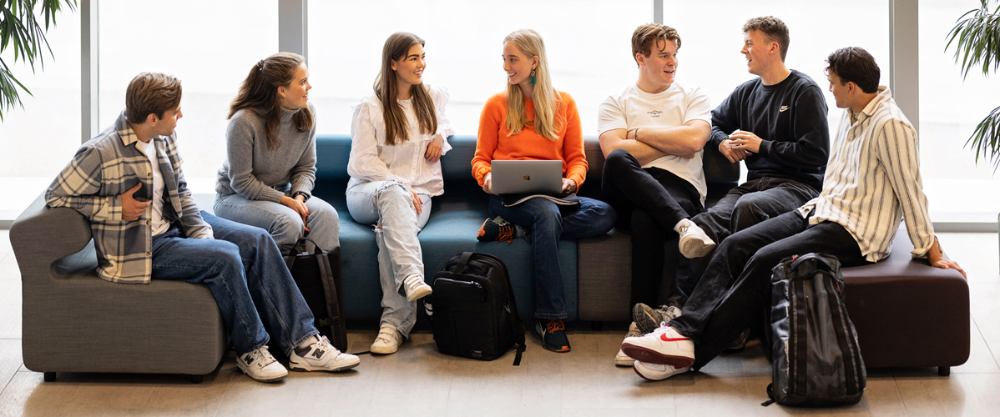
Which projects can you work on?
Every spring, about 500 different projects take place in EiT villages at NTNU.
In EiT, you work on a project of your choice within the overall theme of the village. The villages are led by teaching staff from most of NTNU's academic communities, and therefore there is a broad range of topics.
Previous student teams in EiT have for instance created apps, podcasts, board games, prototypes, technical aids, courses, performances, feature and commentary articles, books, and analytical reports.
Projects from 2025
Topp7
Topp7 with TSO combines spectacular nature and classical music in a unique hiking experience through Bymarka in Trondheim. At each of the seven peaks on the 30 km long trail, music is activated via QR codes, carefully selected to reflect the landscape. The student group developed the project in collaboration with the Trondheim Symphony Orchestra & Opera (TSO) and Trondhjems Turistforening.
Village: Lyd, mennesker og natur - in Norwegian
The students behind the project: Eirik Helseth Borlaug (Civil and Environmental Engineering), Geir Olav Thomasgard (Economics and Business Administration), Magnhild Riise Tansem (Chemistry and Biotechnology), Mathilde Dahl Sørhaug (Ecology, Behaviour, Evolution and Biosystematics), Sondre Edvardsen (Film and Media Studies), Stian Gjørven Hellem (History) og Tora Pedersen Reigstad (Electronics Systems Design and Innovation)
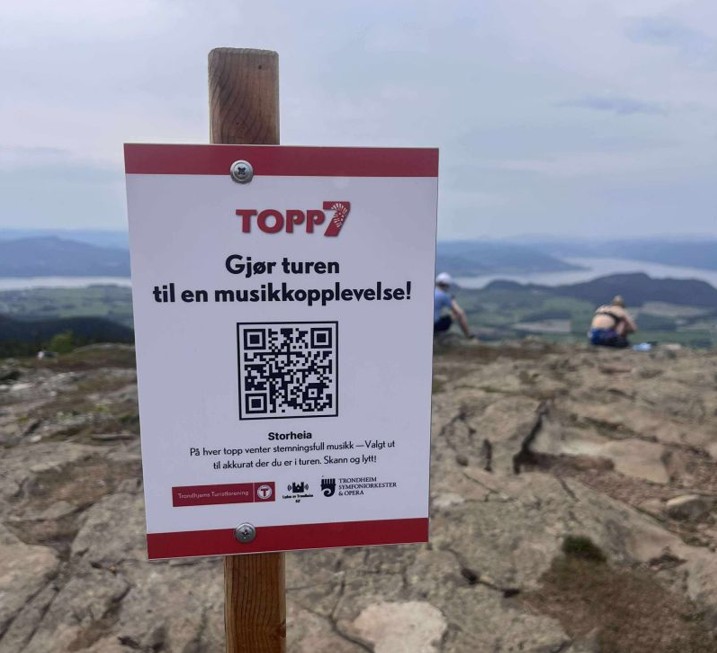
COUNTOGRAPHUS
COUNTOGRAPHUS is an IoT-based solution for monitoring bark beetle populations in the forest. The solution provides new data and insights into the beetles’ behaviour and reduces the strain of emptying beetle traps. The students created a proof of concept and business model of how bark beetle populations can be monitored in an effective and profitable way by leveraging IoT technology, telecom and existing solutions.
Village: Internet of Things – in Norwegian
The students behind the project: Jakob Behrens (Informatics), Simon Settem Bævre (Economics and Business Administration), Elias Moldrheim Haugstvedt (Real Estate and Facilities Management), Georg Bøni Hofstad (Electronics Systems Design and Innovation), Frida Skogheim Larsen (Computer Science), Jens Mathias Jenssen Richter (Industrial Economics and Technology Management).
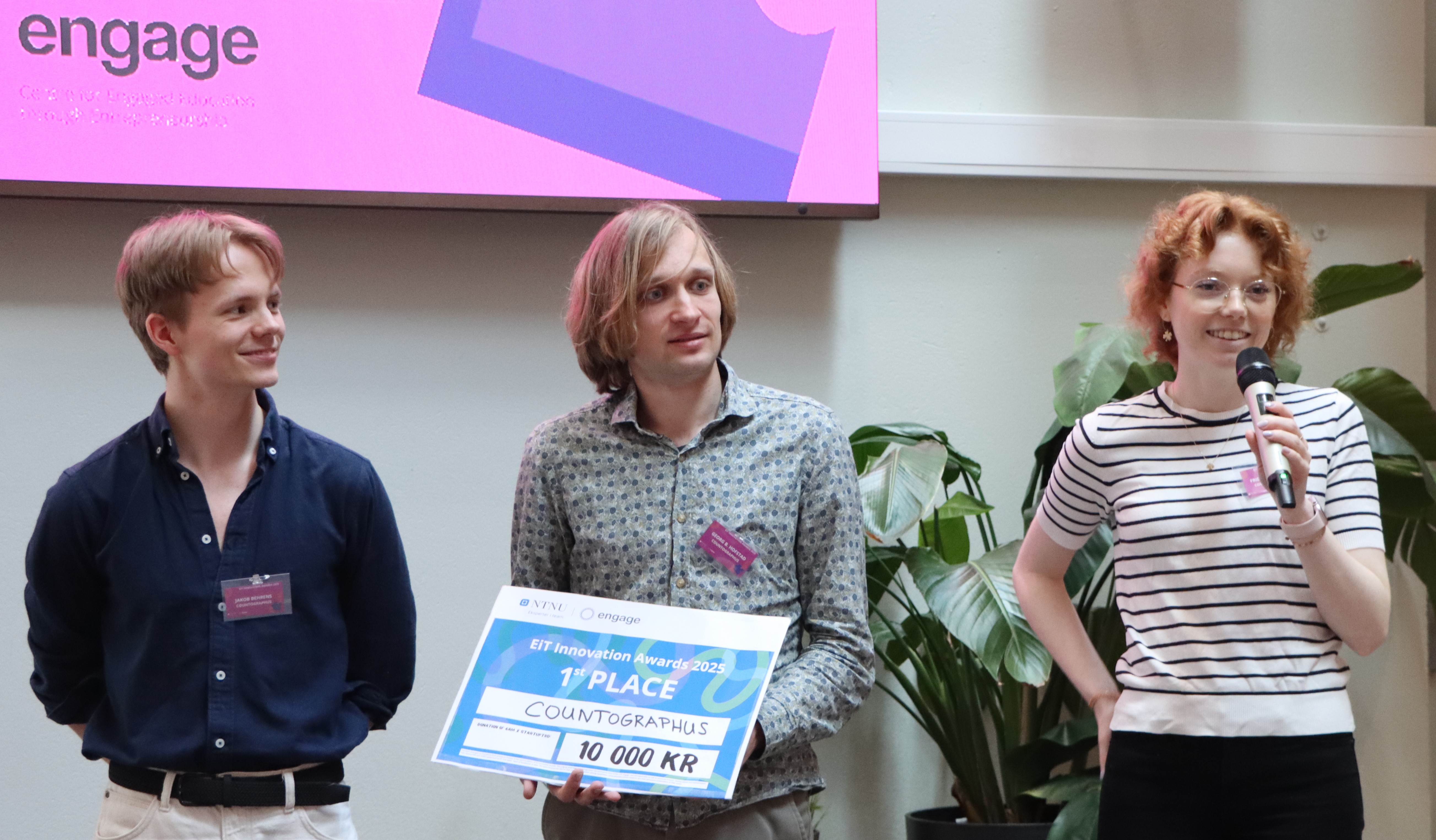
Takknæmlig
Takknæmlig is an appreciation app where users can write what they are thankful for each day, with the goal of improving mental health. The app enables users to express gratitude, share with friends or the world, track their mood over time and read short articles on the value and importance of gratitude.
Village: consumption | design | lifestyle – in Norwegian
The students behind the project: Ellen Sofie Myrmo-Silset (Industrial Design Engineering), Sofie Broum (Economics and Business Administration), Sondre Tveiten (Cybernetics and Robotics), Egil Ørdal (Musicology), Frid Julie Baltzersen Jenssen (Digital Transformation) og Halldis Berg (Film and Media Studies).
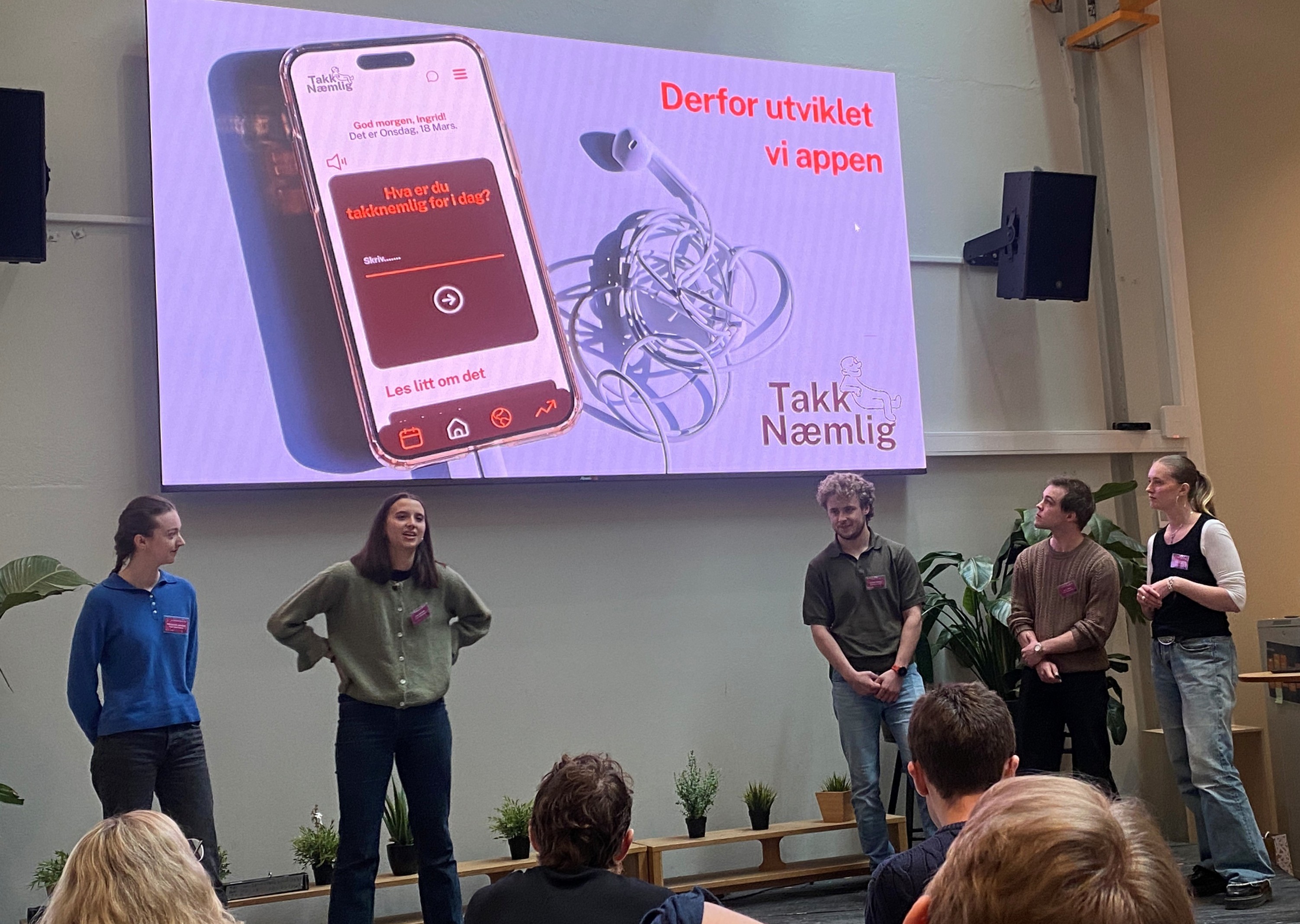
Student projects
Bestelampen (a lamp for grandparents)
Bestelampen (a lamp for grandparents)
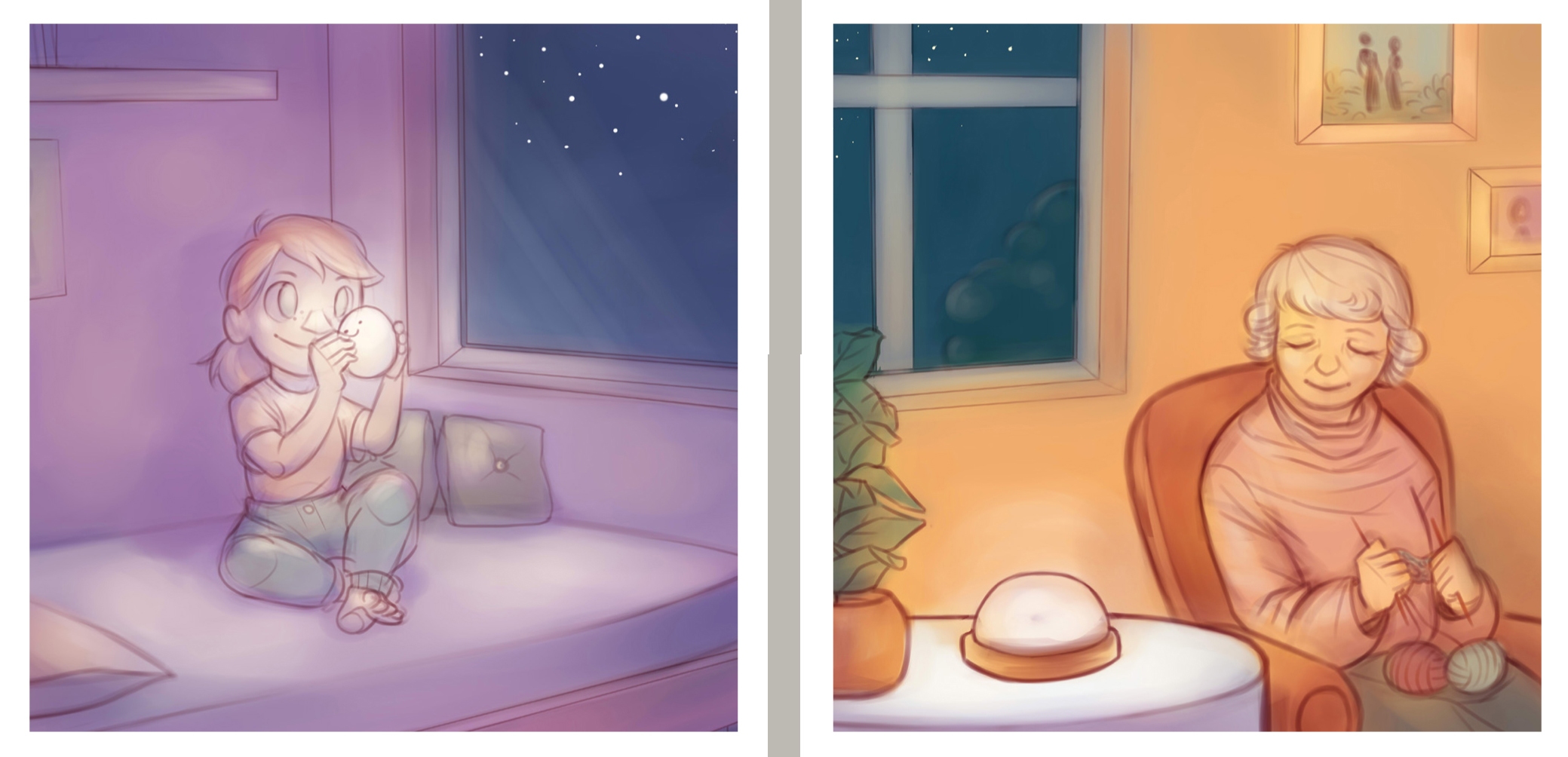 Village: Consumption | design | lifestyle
Village: Consumption | design | lifestyle
The team has created a concept design and a simple prototype for a set of interactive lamps to spark a feeling of closeness between grandparents and their younger grandchildren. Grandparents have one main lamp that is linked up with one or more small lamps that belong to their grandchildren. When touched, the small lamps will send a signal that causes the light of the main lamp to change, and vice versa. In a simple way, the lamps can create a sense of connectedness in families across generations. The team has called their concept “Bestelampen”.
The students behind the project: Camilla Dahlstrøm (industrial design engineering), Jørgen Sirhaug (informatics), Ola Iuell Høklie (industrial design engineering), Siv Iren Kjørsvik (civil and environmental engineering) and Susanne Irgens Gravdal (industrial economics and technology management).
BæggLåkk
BæggLåkk
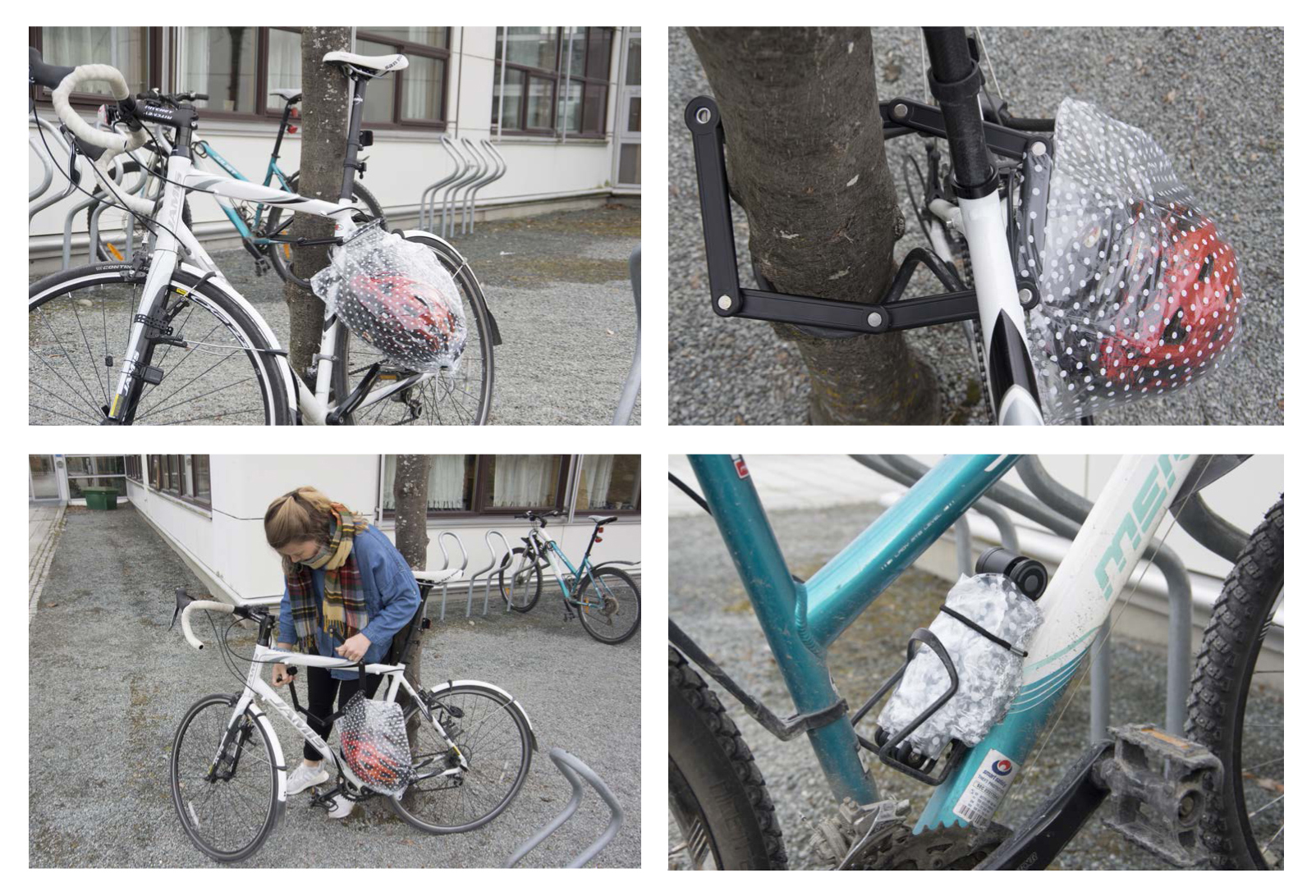 Village: Consumption | design | lifestyle
Village: Consumption | design | lifestyle
The team conducted a survey and interviews on the use of bicycle helmets, and they discovered a clear need for a simpler way to store a helmet when the bike is parked. The need to carry a helmet around with you after a bike trip, or to leave it hanging from the handlebars exposed to wind and weather, makes many cyclists reluctant to use a helmet. As a solution to this, the team developed the BæggLåkk – a helmet storage bag with a bicycle lock. The solution makes it easy to store the helmet on the bike frame, so that helmet stays dry and the bike is locked. The team made a simple prototype of the BæggLåkk.
The students behind the project: Anne Kirstine Berger (civil and environmental engineering), Astrid Oline Almli Ressem (energy and environment), David Tollnes Flem (mechanical engineering), Mathieu Remaut Lund (industrial economics and technology management) and Truls Tveitdal (industrial design engineering).
Bærekraftig sjømat - Sustainable Seafood Day
Bærekraftig sjømat - Sustainable Seafood Day
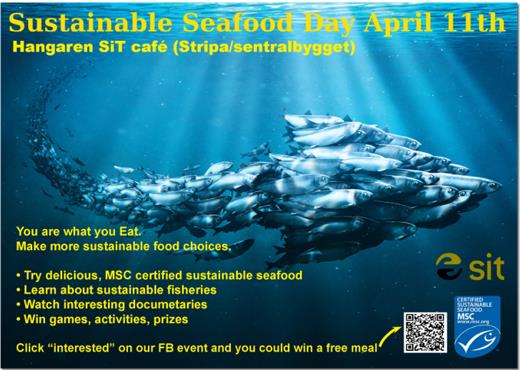
Village: Saving the world is not rocket science
The team has been working with the topic of overfishing and cooperated with WWF and MSC to create awareness of overfishing and sustainability in our oceans. But also to foster rsponsible, sustainable consumer behaviours in seafood consumption among NTNU students, staff and cafè workers. The team arranged a sustainable seafood day at one of the NTNU cafeterias where it was sold hot dishes with sustainable seafood, presentations and a quiz was also held. The team has also set in motion the process of making NTNU an MSC certified organisation meaning that all seafood served at NTNU origins from sustainable fishing.
The students behind the project: Astrid Anette Carlsen (Behavioural Ecology), Cara Lynn McHardy (Industrial Ecology), Elise Brygmann (Biotechnology), Talgat Ospanov (Project Management) og Yajing Wang (Electronic systems design and innvation)
The Carbon Hunt
The Carbon Hunt
Village: Environmental Influences on Human Health - in Norwegian
“The Carbon Hunt” (in Norwegian Jakten på karbonet) is a board game aimed at children in grades 5-7. The game pieces are 3D-printed dinosaurs in bioplastic and the game includes different types of educational cards based on the science curriculum.
The student team collaborated with the Trondheim Municipality and Grønn Barneby (“Green children’s city” - a project supporting sustainable initiatives in kindergartens and schools). Prototype testing of the board game was highly successful. The next step is printing and distributing copies to schools in Trondheim.

The students behind the project: Colleen Solveig Frøysa (Chemical Engineering and Biotechnology), Eira Johanne Jørgensen (Cybernetics and Robotics), Ingrid Udnaes (Management of Technology), Jakob Oskar Erlandsson (Food and Technology) and Richard Breivik Jacobsen (Biophysics and medical technology).
CarryBear
CarryBear

Village: Biomaterials: Body Parts of the Future
The team developed CarryBear, a product that enables children with long-term health problems to communicate with their friends. This can in turn reduce the sick child’s risk of becoming isolated and developing mental health problems. CarryBear is a rugged, durable and waterproof product that makes it possible for sick children to communicate with their friends via telephone, tablet computer or PC, even if their friends are out. During the EiT semester, the team made a working prototype of the CarryBear.
The students behind the project: Rebeca Garcia Alvarez (biotechnology), Lars Borge Hellesylt (cybernetics and robotics), Mette Stausland Istre (biotechnology), Ken Siva Lie (computer technology), Per Kristian Pöcher (cybernetics and robotics) and Henri Ruul (global health)
Drivhuset - The greenhouse
Drivhuset - The greenhouse

Village: School facility
The team has tried to solve the challenges of increasing numbers of students and teachers at Åsvang school. They have made a report that presents suggestions for rehabilitation, reconstruction and new use of the school buildings. The old school building becomes "the greenhouse", a reference to a place where the children`s ideas and thoughts can grow and flourish. The greenhouse will contain a library, a science room and a learning room to promote the childrens interest for natural sciences and critical thinking.
The students behind the project: Jan Fuhre (Sport Science), Bente Bjerkan (Human Movement Science), Sophie Kappler (Architechture), Steffan Jansen (Economics) and Mari Skoge (Psychology)
Geneius
Geneius
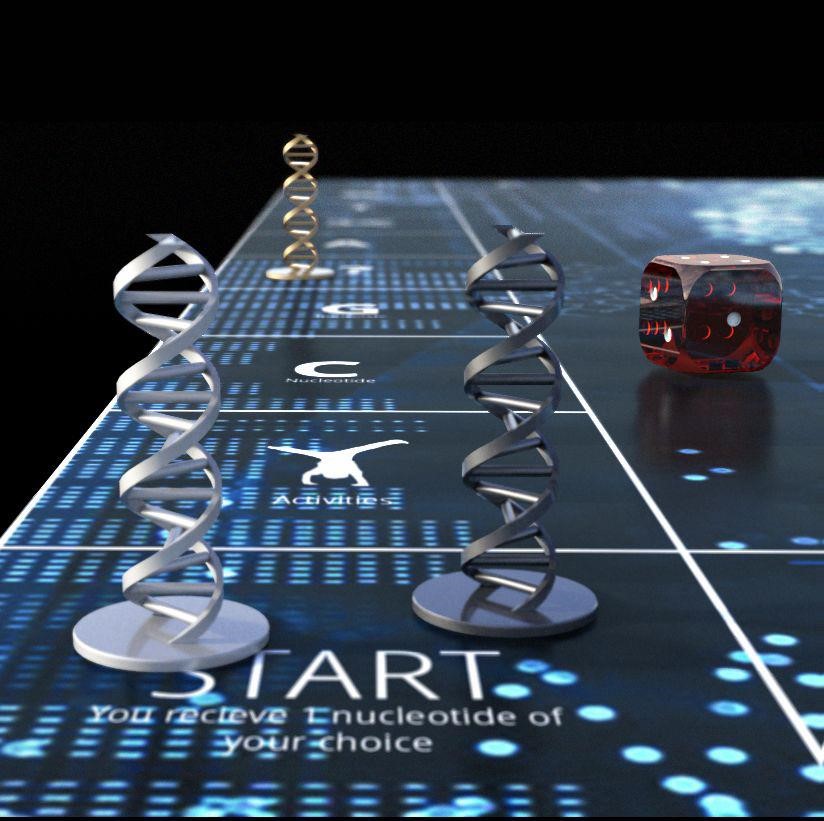
Village: The personal genome
The team has designed a genetics themed board game. The board game was designed to raise awareness about gene-technology, gene manipulation and how this new technology affects us. The game engages the player in discussion and reflection and the target group is ages 16 and up. It is relevant for students attending 10th grade but also high school students and others who would like to learn more about gene-technology. The game tries to balance probability and knowledge to make the experience more life-like.
Students behind the project: Emilie Kvaløy (Molecular biologi and biochemistry), Erlend Tande (Medicine), Shannen Sait (Enviromental chemistry), Sunniva Haugen (Science and technology studies), Thomas Malmo (Human movement science) og Viktor Olsson (Architechture)
How can NAV ensure equal participation in working life?
How can NAV ensure equal participation in working life?
Village: Universell utforming for mangfoldig deltakelse
Many people are not part of the working force today, despite high demand in the labour market. The Norwegian Labour and Welfare Administration (NAV) in Trøndelag invited the students in the village “Universal Design for Diverse Participation” to provide input on how to meet this challenge.
Listen to one of the student teams in the podcast below (in Norwegian):
Mathworld
Mathworld
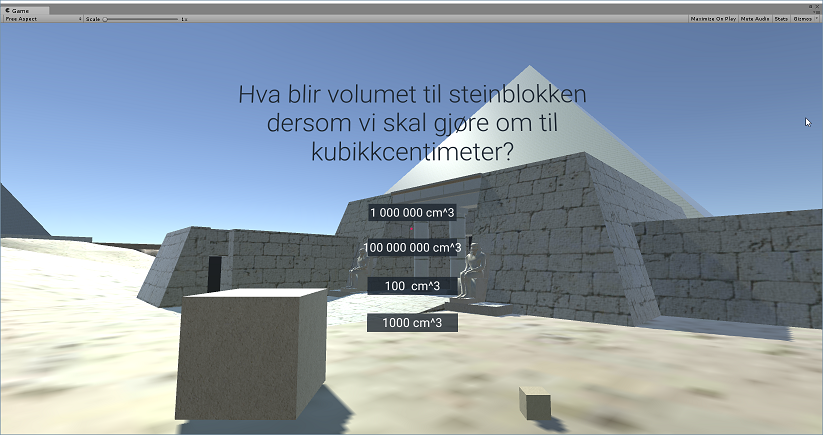 Village: Virtual and augmented reality (VR/AR) in learning and exercise
Village: Virtual and augmented reality (VR/AR) in learning and exercise
The student team has developed the VR application MathWorld, which is a module-based game with quiz elements that teach and test knowledge in geometry. The game takes you to Egypt and lets you explore an open world. The problem formulation they have worked on is:
“How can VR be used in learning geometry for students in grades 8-10?”
The students behind the project: Caroline Enevoldsen (physics and mathematics), Eirik Fosse (informatics), Sophie Østli (programme of professional study in psychology), Petter Bakkan Johansen (computer science), Simen T. Vadseth (industrial economics and technology management), Sindre Fossen (simulation and visualization).
MONS – Mobile Origami Noise Silencer
MONS – Mobile Origami Noise Silencer
Village: Innovation in Health Care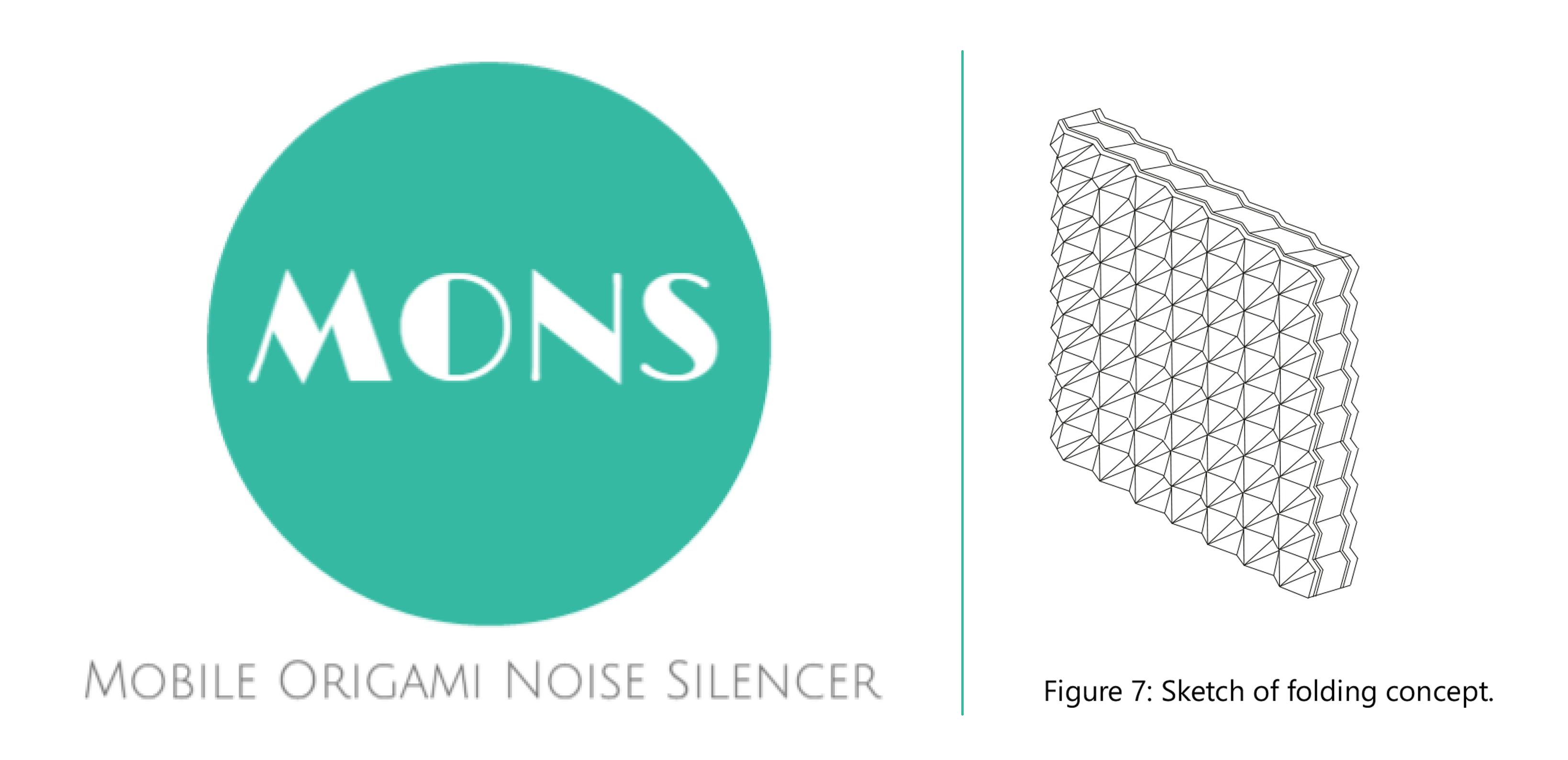
The team have come up with the idea of a mobile and foldable noise-reducing partition wall, which can be used in multi-bedded hospital rooms. They envision making the wall with noise-absorbing materials and using a design inspired by the art of origami, enabling the wall to stretch from floor to ceiling. The group argues that the wall will reduce the noise level in the room, thus helping to ensure patient confidentiality and enabling the patients to have private conversations, and also provides increased privacy.
Students in the team: Magnus Bjørnøy (economics), Emilie Marie Glas (sports science), Marius Lyngstad (architecture), Benedikte Smenes (medicine) and Nike Welander (neuroscience).
My PatientProfile
My PatientProfile
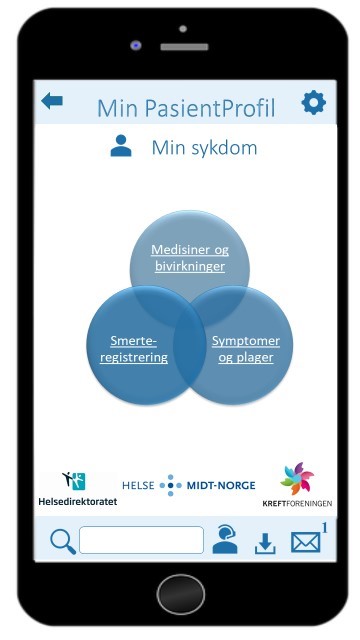 Village: Design of future health services
Village: Design of future health services
The team has developed an app called "My PatientProfile". The app is a personal tool for cancer patients where the patient can register information like how their symptoms are each day, side effects of treatments an other relevant health related information. The app also contains important information about the disease the patient is suffering from and a calendar with appointments to give the individual better control and disease mastery.
"My PatientProfile would be a major safety for me"
Family member of a patient
Students behind the project: Gyrid Madsen (Adult learning), Bård Balto and Astrid Kirkaune (Entrepeneurship, innovation and society)
Nanopedia
Nanopedia
Village: Nanotechnology, small and good?
The team started out by noting that there is little communication and promotion of nanotechnology in Norway, even though nanotechnology will play an important role for society in the future. As a response to this, the team developed a website intended to function as communication platform for nanotechnology. The target audience for the website is students at upper secondary school. The team has produced the following content for the website: Texts about nanotechnology (with an emphasis on texts about nanobiosensors) and videos of a visit to the Clean Room.
Students in the team: Anna Ulvensøen (chemical engineering and biotechnology), Anders Hutcheson (chemistry), Kim Robert Tekseth (physics and mathematics), Philipp Ehlert (chemical engineering and biotechnology), Henrik Malvik Halvorsen (cybernetics and robotics) and Astrid Fagertun Gunnarshaug (chemistry)
pHus
pHus
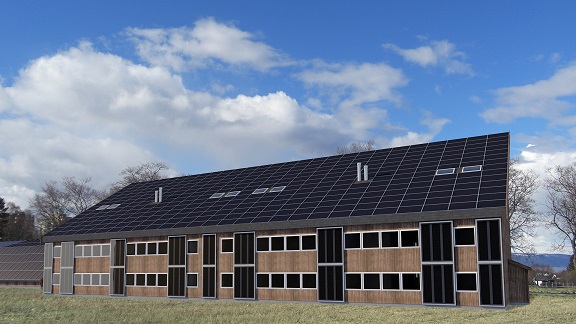 Village: Powerhouse
Village: Powerhouse
The group has worked on designing a Powerhouse for Brøset in Trondheim, which would produce more renewable energy than it uses during a lifetime of 60 years. The assignment involves calculating the energy consumption for materials, construction of the building and heating requirements, as well as power generation from renewable sources and architectural design. This project presents a building for 60 residents that fulfils the Powerhouse requirements.
The students behind the project: Elisabeth Marie Opsahl (marine technology), Ingrid Børve (physics and mathematics), Emil Wenstad Einarsrud (civil and environmental engineering), Sarah Warloe (chemical engineering and biotechnology), Jan-Magnus Neverdal (industrial design engineering), Vegard Jørgenvåg Bjerkestrand (materials science and engineering).
Psykt Informert
Psykt Informert
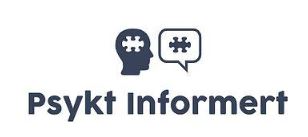
Village: Environmental Influences on Human Health
Psykt Informert is a website that aims to provide information on all the low-threshold services in mental health in the Trondheim region.
The student team’s goal was to make it easier to find relevant services quickly, so that more people can get the right help at an early stage. In their work, the team has emphasized usability and a structure that is easy to understand.
Good feedback from the municipality
The project was welcomed by the municipality of Trondheim, which found that the work on the website and the mapping of services was a helpful step towards improving information about mental health services in the municipality.
The students behind the project: Ivar Håland Carlsen (industrial economics and technology management), Ayla Marie Marhaug (psychology), Marie Bringsvor (cybernetics and robotics), Maria Løseth Hellebust (public health) and Trygve Staupe (chemical engineering and biotechnology).
Sensors in trains
Sensors in trains
Village: Punctual and efficient railways
The team developed a concept to reduce the time passengers need for boarding and leaving a train at a station. Motion sensors in the carriages of the train detect places where the train is already fairly full, and where there is more room. Light signals on the platform then show waiting passengers the best place to stand in order to board the train quickly. At a meeting with the Norwegian State Railways (NSB), the team learned that many railway delays occur during boarding and leaving trains, and that delays for one train can lead to more delays throughout the system. The potential of the concept is thus great. The student team tested a prototype using radar sensors on a local train during rush hour. However, they found that the conductor’s movements through the carriages interfered with the calculations made using this sensor, and recommended using other sensor technology for this purpose.
The students behind the project: Nicklas L. Eriksson (buildings and environment), Tor Høisæter (engineering cybernetics), Emanuel Nordbrenden (mechanical engineering), Håkon Solbjørg (informatics).
Virtual theory test – An innovation project for the Norwegian Public Roads Administration
Virtual theory test – An innovation project for the Norwegian Public Roads Administration
Village: VR/AR and AI for Learning - in Norwegian
In 2023 nearly 50% failed the theory test. Using VR in learning increases students’ concentration and enjoyment, while they apply theory in practice, which often leads to better learning outcomes.
The students worked on an innovative supplementary offer for traffic students preparing for the theory test, where they can practice through a virtual game. They developed a proof-of-concept to show some of the possibilities VR can offer the Norwegian Public Roads Administration. Watch a demo in the video below:
The students behind the project: Anna Johanne Holden Jacobsen (Computer Science), Christian Le (Cybernetics and Robotics), Harald Bjerkeli (Physics), Caroline Grimsrud (Electronics Systems Design and Innovation) and Olav Seim (Industrial Economics and Technology Management).
Student interviews: How is it like to be a student in EiT?
Bjørnar Berli
Bjørnar Berli
Bjørnar Berli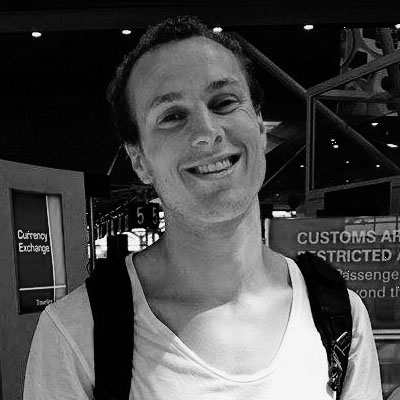
Village: Consumption | design | lifestyle
Village type and language: Semester-based Norwegian
Field of expertise: Psychology
About being a student in EiT
The best thing about EiT was that it was a break from my other studies. First, what we were working with in EiT (the village theme) was something completely different from the field I am studying in my everyday life. Second, the way you work in EiT is different from my field, which is psychology. In my studies, we read the syllabus, digest the content and prepare for the exam, where we write an assignment. In EiT, the work takes place between 08:00 and 16:00 on Wednesdays, and it’s a bit more like an ordinary school day with group activities. In psychology, the closest you get to group work is the study group. It’s also good to keep in mind that you are finished with EiT before exam time.
At the beginning, it was tiring, with a lot of focus on the process. The constant evaluations of the group work were frustrating, because I felt that I did not know enough to be able to evaluate in a good way (that we didn’t have a basis for this so early in the semester). On top of that, the focus on process meant that we did not make any progress with the project work, which also contributed to the frustration. But once we had started on the project, I thought it was OK to focus on the process. There was just as much to learn from that.
The facilitation went smoothly and I didn’t think there was any hassle about being facilitated. The learning assistants did not get in the way or get over-involved in the group work. At the start I felt a bit frustrated that there was so much focus on the process, but after a while it was cool to learn about facilitation and to see the team become more self-facilitating. In the village, I experienced that the village supervisor and the learning assistants were on “our team” and my team saw them as a resource.
Benefits from EiT
I have mainly become more aware of my role in a team. I wouldn’t say that I’ve been surprised about who I am, but rather that I have become more conscious about what I should do or not do in the role that I have.
Advice to new EiT students
Before EiT starts, you can think about what you can do to make sure the teamwork starts well and how you can influence the team in a positive direction. Be aware that you have a major influence on how the team will develop. If you are positive and optimistic about the work, people will flourish, and you help to create a good foundation for the rest of the semester. Set a good standard early on by doing what you say you will do, more than in other subjects, and volunteer to contribute so that you inspire others to tackle tasks that the team needs to solve. In this way you contribute to creating an okay team and then everything will turn out well.
If I had to take EiT over again I would have been less focused on the results – the project is not the key thing. Also, in retrospect, I see that it was surprisingly easy to achieve the project goal and so there was no reason to feel stressed about it. A tip to future students would be not to get so frustrated over the process focus at the start.
Ingrid B. Gjerde
Ingrid B. Gjerde
Ingrid B. Gjerde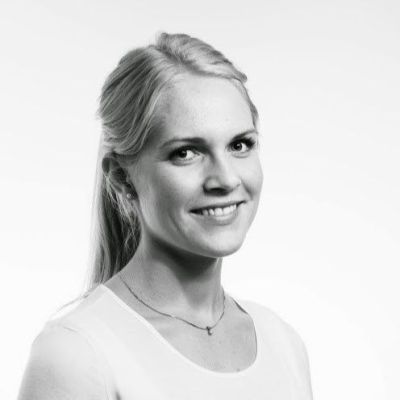
Village: Health-promoting living environment and urban development
Village type and language: Semester-based Norwegian
Field of expertise: Psychology
About being an EiT student
At the beginning I thought it was a bit weird to be observed and facilitated, but I got used to it. After a while, we wanted more and more facilitation. My team thought that sociograms were especially helpful (one of the sociograms we got showed that “some people in the group look at everyone, while others only look at one” and another that showed “how many times the team members spoke”). The sociograms were very visual and made it easier to understand some of what was going on in the team, and then we could talk about why it was like that and what we could do about it. Once we got a sociogram that showed that I was one of the ones who was dominant in the team, in that I talked a lot. At first, I experienced that as a bit unpleasant, but it was well received by the team and made me more aware of myself after that.
My team was very interdisciplinary with one student from civil engineering, one from industrial economics, one from Health, Safety and the Environment (HSE), one from energy and environmental engineering, and me from psychology. We spent a lot of time on defining our common project. At the start we had very many different ideas, probably because each of us looked at the village theme based on our own field, which I think was natural because we had no other reference. We finally found a project where we could all contribute something (we would develop a building that would inspire a sense of community and togetherness in a residential area), but it demanded negotiations between us. An example of such negotiations was that the civil engineering student wanted a swimming pool in the building, but the industrial economics student concluded that it would be too expensive. In EiT, I experienced that the project became broader when our whole interdisciplinary team worked on it together, compared with what would have happened if each of us had completed it on our own. For example: If I had worked alone I would have written a report about relationships, but because I was working together with the others in the team, the report also covered the building itself, finance, marketing and operations.
Benefits of EiT
That a project has more aspects than I think of at first – that’s the most important thing when I look at it from the perspective of my field. You become aware of other aspects when you hear someone who is “wearing glasses from a different discipline” talking about the project. Then you take a step back and get an all-round picture.
Through EiT, I gained experience in giving and receiving feedback, and I learned that it is important for the team members to understand what they each contribute to the teamwork. Many members of my team were very self-critical, so we focused on giving positive feedback to reinforce good behaviour. But we also gained a lot from the constructive feedback messages, even though they are more difficult to give. With time, we got better at giving feedback to each other. We got better at using specific examples as the starting point and referring to specific situations as the basis for the feedback we gave. In this way, we avoided situations where the person who received the feedback took it personally.
Advice to new EiT students
From the start, try to be aware of the role that you tend to take in group work, and use EiT to get outside that role. In EiT, no roles are set in advance, nobody knows each other from before or knows what you’re going to work with, and you are part of a whole new teamwork. In this way, EiT provides a unique opportunity to explore and test other roles. Can I be someone different from the one I always am in a group? Perhaps you can try to take up more space if you are often hesitant? I often take a leader role in group work and I took the opportunity to try out other roles during the EiT work. I found that I learned a lot from that.
Suzana Zoric
Suzana Zoric
Suzana Zoric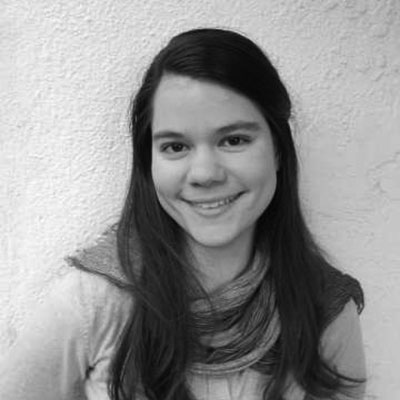
Village: Improving Quality of Life through the Focus on Silence
Village type and language: Intensive / English
Field of expertise: Architecture
About being an EiT student
It was exciting that the village was multicultural with a wide variety of disciplines. I was a student in an international village and in my team alone there were people from Norway (half Croatian), Azerbaijan and South Korea. The fields of study were medicine, music, petroleum, childhood studies and architecture.
Although we came from very different fields, it was surprisingly easy to find a common problem formulation. That was probably related to the course (the village theme). It is a bit strange to have silence as a village theme. I wanted to work together with students who were open and positive, and assumed that students who applied for this village theme, and who were also international, would have that kind of attitude. That proved to be right, and I think it was exactly these attitudes that everyone had that caused it to work well.
The learning assistant’s facilitation was a bit strange at the start, because we didn’t know what it was about. On the second village day, a sociogram was handed out to us showing that two people in the group had not spoken, without us being aware of it. From this, we learn to be more aware and active in giving everyone in the team a chance to speak. After a while it was quite okay to be facilitated, and it was interesting to hear their observations and questions. Being facilitated is something you get used to.
Benefits of EiT
EiT is a course that we need. For me, perhaps it wasn’t an academic necessity, but EiT is a subject you need to live a good life in a community, because you gain experience in working together with people who are different and think differently. Usually you can work together with the people you like, while in EiT you don’t have enough time not to like anyone. You have to work together with the people in your team. If you take EiT seriously, you learn a lot about interpersonal relationships in the workplace, what to take up, and how to say it.
In previous group work, I have often been the one who has taken on the duties and done most of the work myself. After taking EiT, I have become more self-reflective, and have learned to take up problems, for example with team members with a low level of ambition, rather than to “throw in the towel” and do everything myself.
Advice to new EiT students
Don’t apply for exemption from EiT, because then you’re doing yourself a disservice. What you learn in EiT is not the same as what you learn on the job. In EiT, you get the time and the opportunity to reflect on teamwork in a completely different way than you do in the workplace, where the results are more important than the process. You might be able to achieve good teamwork intuitively, but you might not be aware of what makes it good.

